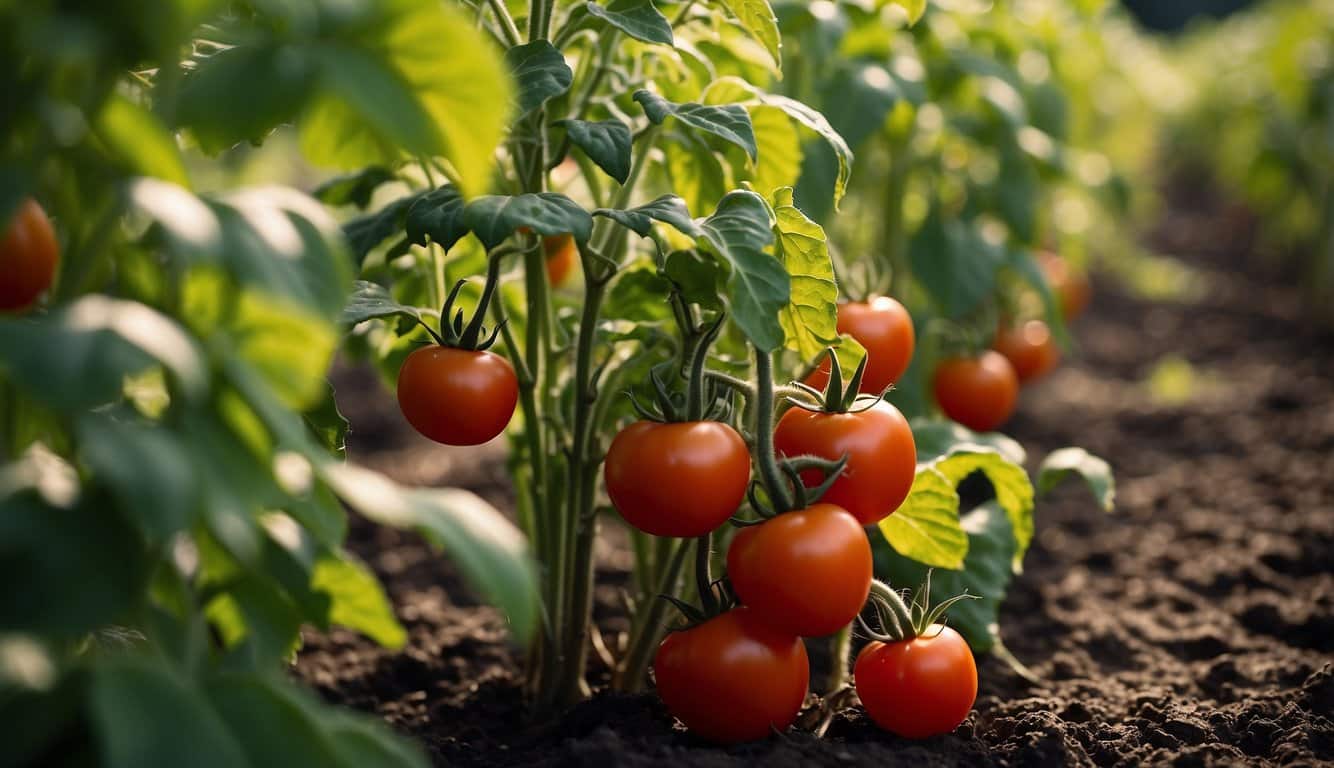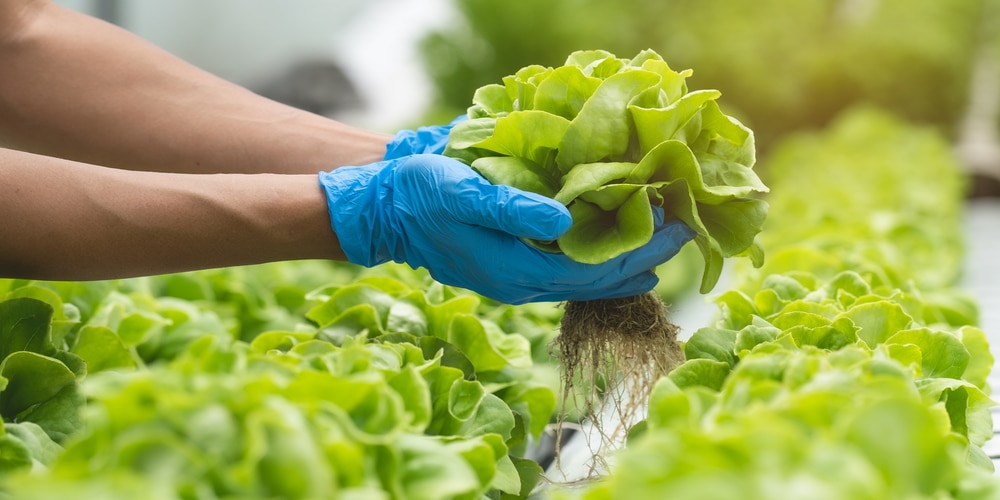Overview of Illinois’ Climate and Soil for Vegetable Gardening
Illinois Climate
Illinois is characterized by its diverse weather patterns, with four distinct seasons influencing your vegetable gardening. The state falls primarily in the USDA Hardiness Zones 5 and 6, which dictates the types of vegetables that are more likely to thrive based on average minimum winter temperatures.
- Spring: You’ll enjoy a gradual warming, ideal for starting cool-weather crops.
- Summer: Expect hot, humid conditions; perfect for heat-loving vegetables.
- Fall: Cooler temperatures return, allowing for a second planting of cool-weather crops.
- Winter: Cold and frosty, a time when your garden rests unless you use protective measures for cold-hardy varieties.
Soil Composition
The soil across Illinois can be quite fertile, especially in areas with rich loam—a mix of sand, silt, and clay that many vegetables favor. However, it’s important to check your local soil composition and consider amending it with organic matter to optimize growing conditions.
Soil Management Tips:
- Test Your Soil: Determine its type and nutrient levels.
- Amend as Necessary: Improve soil structure with compost for better water retention and aeration.
- Mulch: Protect your soil from erosion and temperature extremes.
By understanding Illinois’ unique climate and soil characteristics, your vegetable garden can flourish. With proper planning and consideration for seasonal changes, you can ensure a productive harvest.
Top 10 Vegetables for Illinois Gardens
Illinois offers a diverse climate, allowing for a wide variety of vegetables to thrive throughout the growing season. With the right care and planting strategies, you can enjoy a plentiful harvest from your own backyard.
Tomatoes
Tomatoes require warmth to flourish. Plant your tomatoes after the last frost date when the soil has warmed up to ensure they grow to their full potential.
Bell Peppers
Bell peppers enjoy the Illinois summer heat. Starting them indoors before transplanting them outside when temperatures are consistently warm leads to a bountiful harvest.
Summer Squash
Summer squash grows quickly in the warm season. Plant in well-drained soil and full sun to savor its peak flavor.
Cucumbers
For crisp cucumbers, plant them in a sunny spot with abundant space to sprawl or climb, and keep the soil consistently moist.
Leafy Greens
Leafy greens, such as lettuce and spinach, prefer cooler temperatures; therefore, they are ideal for spring or fall planting. Provide them with partial shade in hotter weather.
Root Vegetables
Root vegetables like radishes and carrots are suited for the Illinois soil. Space them properly for adequate growth and harvest before the ground freezes.
Beans
Beans do well in many Illinois gardens. Plant beans in warm soil and a sunny location for best results.
Peas
Peas prefer the cooler temperatures of spring or early fall. Plant them early and support them with a trellis for optimal growth.
Onions
Onions need full sun and fertile, well-drained soil. Plant in early spring and patiently await their development.
Broccoli
Broccoli is a cool-season crop that should be planted in late summer for a fall harvest or early spring for an early summer harvest. Keep the soil fertile and moist.
Planting and Care Tips for Illinois Vegetable Gardens
When planting vegetables in Illinois, selecting the right time and soil conditions is paramount for your gardening success. Your vegetable garden will flourish with the right foundations and consistent care.
Soil Preparation: Before planting, ensure your soil is rich and well-drained. Amend it with compost or organic matter to promote healthy growth. Test the soil’s pH, aiming for a range between 6.0 and 7.0, ideal for most vegetables.
Timing: Illinois has diverse temperatures throughout the year. Plant cool-season crops like lettuce and radishes early in the spring. For warm-season vegetables like tomatoes and eggplant, wait until the threat of frost has passed, usually after mid-May.
Spacing: Proper spacing prevents overcrowding, which can lead to disease and poor yields. Follow the recommended spacing guidelines for each vegetable. For example, radishes need about 1-2 inches between plants.
Watering: Most vegetables need about an inch of water per week, either through rainfall or watering. Ensure the water penetrates deeply to encourage strong root development. Early morning watering is best to reduce evaporation and disease prevalence.
Pest Control: Keep an eye out for pests and manage them accordingly. Physical barriers, like garden fabric, can deter some pests, while insecticidal soaps can address infestations without harming beneficial insects.
Table of Common Vegetables and Their Care Requirements in Illinois:
| Vegetable | Soil Type | Watering Needs | Sun Exposure |
|---|---|---|---|
| Lettuce | Any soil | Once weekly | Partial shade |
| Radishes | Well-drained | Even moisture | Full sun/partial shade |
| Eggplant | Rich, well-drained | 1 inch/week | Full sun |
| Arugula | Variety of soils | Consistent moisture | Full sun/partial shade |
| Tomatoes | Warm, well-drained | Deep weekly watering | Full sun |
By following these basic care instructions, you’ll set your Illinois vegetable garden on the path to a bountiful harvest.
Pest Management and Disease Prevention Strategies
When cultivating vegetables in Illinois, effective pest management and disease prevention are essential to ensure a healthy harvest. Your approach should be both proactive and responsive to current conditions.
Physical/Mechanical Management:
- Regularly inspect for pests such as Japanese beetles and caterpillars; remove them by hand.
- Prune diseased branches and remove webs or galls promptly.
- Utilize barriers as a deterrent for certain pests.
Cultural Practices:
- Choose a well-drained site.
- Rotate crops annually to disrupt pest life cycles.
- Maintain garden hygiene by clearing out debris and weeds that can harbor diseases.
Chemical Controls:
- Employ pesticides carefully and according to label instructions.
- Opt for organic options when possible to minimize environmental impact.
Table 1: Pest Prevention Tips
| Action | Purpose |
|---|---|
| Plant Selection | Opt for disease-resistant varieties suited to the local environment. |
| Garden Sanitation | Keep the area free of plant debris to lessen disease spread. |
| Proper Spacing | Allows for airflow and reduces the chance of disease transmission. |
| Timely Watering | Water at the base of plants to prevent moisture on leaves, which can lead to disease. |
By combining these strategies with diligent observation and timely actions, you can mitigate the impact of pests and diseases on your Illinois vegetable garden. Remember, prevention is often the most efficient way to maintain a healthy garden.
Harvesting and Storing Vegetables in Illinois
Harvesting your vegetables at the right time is critical for optimal flavor and longevity. Radishes, for example, should be picked when they are about 1 inch in diameter, approximately 3-4 weeks after planting. Delay can result in hot and tough vegetables, less than ideal for eating.
Spinach is ready to harvest when leaves reach 3 to 6 inches long. Consistent harvesting encourages new growth, so gently pick the outer leaves with care. For vegetables like cucumbers, ensure to harvest them before they surpass their peak size to maintain taste and texture. They can be picked when they are firm and green.
When storing vegetables, follow these guidelines:
- Root crops: Store in cool, humid conditions. Radishes can be kept in the refrigerator, in a plastic bag, to maintain freshness.
- Leafy greens: Spinach and similar vegetables should be stored in a refrigerator’s crisper drawer, ideally in a breathable bag with a paper towel to absorb excess moisture.
As for managing storage space, if you have a root cellar, that’s perfect for crops like potatoes and beets. If not, a cool basement or even a dark, cool closet can substitute well in maintaining the quality of your harvested vegetables.
Here is a brief table for quick reference:
| Vegetable | Harvesting Size | Storage Location | Storage Tip |
|---|---|---|---|
| Radishes | 1 inch diameter | Refrigerator | Place in a plastic bag |
| Spinach | 3-6 inches long | Refrigerator | Store in breathable bag with paper towel |
| Cucumbers | Firm and green | Room temperature | Consume quickly or refrigerate |
Remember, the key to extending the shelf life of your produce and enjoying the fruits of your labor throughout the Illinois winters is proper harvesting and storage.
Frequently Asked Questions
When it comes to gardening in Illinois, timing and choice of crop are crucial. Here are some specific answers to frequently asked questions that will help you maximize your vegetable garden’s potential.
What vegetables thrive in Illinois winter conditions?
Vegetables like radishes and kale can tolerate the cold Illinois winters. Plant them in late summer or early fall to ensure they establish before frost.
Which fruit varieties are most successful in an Illinois garden?
Apples, peaches, and blueberries are among the fruit varieties that adapt well to Illinois climates. Choose cultivars known for their winter hardiness and disease resistance.
Can you provide a timeline for planting vegetables in Illinois?
Generally, you should start spring crops such as lettuce and spinach as soon as the ground can be worked. Warm-season crops like tomatoes and peppers are planted after the last frost date, usually in late April or May.
What is the optimal month to start a squash garden in Illinois?
For squash, planting seeds directly in the garden is best done in late May after the danger of frost has passed to take advantage of the warm soil temperatures.
How should I schedule cucumber planting for best results in Illinois?
Begin planting cucumber seeds or seedlings two weeks after the last spring frost. For a continuous harvest, stagger additional plantings every few weeks until midsummer.
What vegetables are recommended for a July planting in Illinois?
July is a good time to plant vegetables for a fall harvest in Illinois. Consider fast-growing greens like spinach and swiss chard, or root vegetables like turnips and carrots.
Last update on 2025-04-20 / Affiliate links / Images from Amazon Product Advertising API













